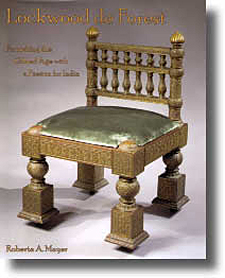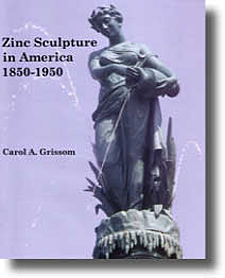
- Rozovsky wins prestigious NSF Early Career Award
- UD students meet alumni, experience 'closing bell' at NYSE
- Newark Police seek assistance in identifying suspects in robbery
- Rivlin says bipartisan budget action, stronger budget rules key to reversing debt
- Stink bugs shouldn't pose problem until late summer
- Gao to honor Placido Domingo in Washington performance
- Adopt-A-Highway project keeps Lewes road clean
- WVUD's Radiothon fundraiser runs April 1-10
- W.D. Snodgrass Symposium to honor Pulitzer winner
- New guide helps cancer patients manage symptoms
- UD in the News, March 25, 2011
- For the Record, March 25, 2011
- Public opinion expert discusses world views of U.S. in Global Agenda series
- Congressional delegation, dean laud Center for Community Research and Service program
- Center for Political Communication sets symposium on politics, entertainment
- Students work to raise funds, awareness of domestic violence
- Equestrian team wins regional championship in Western riding
- Markell, Harker stress importance of agriculture to Delaware's economy
- Carol A. Ammon MBA Case Competition winners announced
- Prof presents blood-clotting studies at Gordon Research Conference
- Sexual Assault Awareness Month events, programs announced
- Stay connected with Sea Grant, CEOE e-newsletter
- A message to UD regarding the tragedy in Japan
- More News >>
- March 31-May 14: REP stages Neil Simon's 'The Good Doctor'
- April 2: Newark plans annual 'wine and dine'
- April 5: Expert perspective on U.S. health care
- April 5: Comedian Ace Guillen to visit Scrounge
- April 6, May 4: School of Nursing sponsors research lecture series
- April 6-May 4: Confucius Institute presents Chinese Film Series on Wednesdays
- April 6: IPCC's Pachauri to discuss sustainable development in DENIN Dialogue Series
- April 7: 'WVUDstock' radiothon concert announced
- April 8: English Language Institute presents 'Arts in Translation'
- April 9: Green and Healthy Living Expo planned at The Bob
- April 9: Center for Political Communication to host Onion editor
- April 10: Alumni Easter Egg-stravaganza planned
- April 11: CDS session to focus on visual assistive technologies
- April 12: T.J. Stiles to speak at UDLA annual dinner
- April 15, 16: Annual UD push lawnmower tune-up scheduled
- April 15, 16: Master Players series presents iMusic 4, China Magpie
- April 15, 16: Delaware Symphony, UD chorus to perform Mahler work
- April 18: Former NFL Coach Bill Cowher featured in UD Speaks
- April 21-24: Sesame Street Live brings Elmo and friends to The Bob
- April 30: Save the date for Ag Day 2011 at UD
- April 30: Symposium to consider 'Frontiers at the Chemistry-Biology Interface'
- April 30-May 1: Relay for Life set at Delaware Field House
- May 4: Delaware Membrane Protein Symposium announced
- May 5: Northwestern University's Leon Keer to deliver Kerr lecture
- May 7: Women's volleyball team to host second annual Spring Fling
- Through May 3: SPPA announces speakers for 10th annual lecture series
- Through May 4: Global Agenda sees U.S. through others' eyes; World Bank president to speak
- Through May 4: 'Research on Race, Ethnicity, Culture' topic of series
- Through May 9: Black American Studies announces lecture series
- Through May 11: 'Challenges in Jewish Culture' lecture series announced
- Through May 11: Area Studies research featured in speaker series
- Through June 5: 'Andy Warhol: Behind the Camera' on view in Old College Gallery
- Through July 15: 'Bodyscapes' on view at Mechanical Hall Gallery
- More What's Happening >>
- UD calendar >>
- Middle States evaluation team on campus April 5
- Phipps named HR Liaison of the Quarter
- Senior wins iPad for participating in assessment study
- April 19: Procurement Services schedules information sessions
- UD Bookstore announces spring break hours
- HealthyU Wellness Program encourages employees to 'Step into Spring'
- April 8-29: Faculty roundtable series considers student engagement
- GRE is changing; learn more at April 15 info session
- April 30: UD Evening with Blue Rocks set for employees
- Morris Library to be open 24/7 during final exams
- More Campus FYI >>
8:22 a.m., May 6, 2009----The University of Delaware Press has announced the publication of two landmark books in the field of art history -- Lockwood de Forest: Furnishing the Gilded Age with a Passion for India by Roberta Mayer and Zinc Sculpture in America 1850-1950 by Carol A. Grissom.
Lockwood de Forest: Furnishing the Gilded Age with a Passion for India is the first major study of this artist, collector and businessman (1850-1932).
De Forest was trained as a painter by the American landscape artist Frederic E. Church. His interest in travel, the Middle East, and decorative art led him to become an early business partner of Louis Comfort Tiffany, and from there to become a professional artistic decorator who specialized in East Indian arts and crafts during what is now called the Gilded Age.
The author is Roberta Mayer, who was awarded her Ph.D. in art history, with a specialty in American art history and a minor in the decorative arts, by the University of Delaware. Her book is the first major study of Lockwood de Forest.
In 1879, de Forest married Meta Kemble, a granddaughter of Alfred V. du Pont. The couple visited India on their honeymoon, a nearly two-year trip during which he purchased jewelry and decorative objects for the firm of Tiffany and de Forest.
When the de Forests returned to New York City in 1882, Tiffany and de Forest dissolved their professional relationship and de Forest established his own business. He set up workshops in Ahmadabad, India, to design furniture and carve lacy teak pieces that could be assembled in many different ways and used as decorative elements in the homes of those who could afford them.
''He was absolutely convinced he was preserving ancient craft traditions that would have otherwise died off,'' says Mayer.
She writes that by 1887 de Forest “was listed in Wilson's Business Directory of New York City as an 'artistic decorator,' a profession which first emerged in the 1880s.”
Much of his work involved designing and decorating Indian-style houses in the East, Midwest and West. Among his clients were Chicago hotelier Potter Palmer, steel magnate Andrew Carnegie, and Mark Twain. His later commissions include Thomas Library and the Deanery at Bryn Mawr College.
Mayer's book is richly illustrated with photographs of de Forests' New York City showrooms and rooms and homes he was commissioned to design.
Weighing in at seven pounds, Carol A. Grissom's Zinc Sculpture in America 1850-1950 is a true compendium -- “the first authoritative and complete treatment” of zinc sculpture, according to Wayne Craven, UD Professor Emeritus of Art History.
Craven explains that “Bronze castings were usually for the higher forms of the fine arts, while zinc was used for a much wider variety of imagery . . . for the casting of both fine arts statuary and 'folk' or vernacular sculptures.”
Because zinc was less expensive than marble or bronze, even the smallest towns could afford life-size statues to give prominence to the, town square, courthouse, local cemetery or other public space.
Among the more popular subjects for zinc art were historical figures, including Ben Franklin, George Washington, Patrick Henry, Robert E. Lee, and Ulysses S. Grant; military figures, regional or folk heroes; gods and goddesses; figures of justice; and animals.
Grissom's book includes 554 illustrations, 354 in color. The statues she discusses are organized by type.
Craven praises Grissom for bringing “a remarkable combination of skills to the subject, remarkable in that her scholarship combines a sensitive reading of the artistry of her subject with a solid scientific knowledge of it involving such matters as chemistry and mathematics” and for having “a wonderful ability to make the complicated technological process of metal casting understandable to the lay reader, and that is no small accomplishment.”
Despite their popularity, many of the zinc statues erected outdoors have deteriorated after a century or more of exposure to the elements.
The author's extensive research -- she has been collecting information for over thirty years, much of it previously unavailable in print -- her experience in conserving zinc statues, and her participation in many preservation projects ensure that anyone seeking to repair damage, replace missing parts, determine suitable protective treatments, or locate a qualified conservator will find this book invaluable.
Grissom is senior objects conservator in the Smithsonian Conservation Institute.



